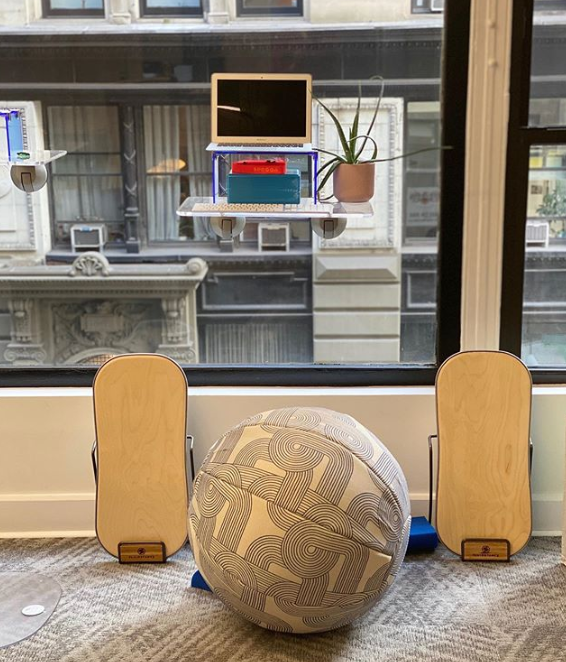Yoga Dan @sproga_ identifies 5 things wrong with your home office setup
Venn partner and OSHA Certified Yoga Dan, founder of SPROGA, identifies 5 common things wrong with desktop setups and offers advice on how to fix them.
Dysfunction & musculoskeletal injury starts at the workstation. Did you know improper sitting and arrangement of desk equipment could potentially lead to serious injury over time? Become hyper aware of how you’re interacting with your home office space now in order to prevent injury later on. Here are 5 common things wrong with desktops and how to fix them.
Dysfunctional sitting arrangements. When you sit down to begin work, how are you sitting? The best sitting posture foundation is one where both Sitz Bones make contact with your chair. What I like about a Venn Air Chair is that you can easily achieve the ideal seated position, while also balancing, rolling and bouncing throughout the day. This active sitting keeps the core engaged, the joints moving and prevents sedentarism from setting in.” You can also switch it up and try out a kneeling position using a Venn sitting cushion. Watch this walkthrough for a how-to guide on becoming aware of your posture and setting up a healthy sitting position:
2. Cushions too soft. If you’re slouching into a couch or armchair with your laptop on your lap day after day - you’re doing it wrong. A too-soft sitting surface that you sink into can cause extended periods of anterior or lateral flexion that can be unhealthy for the spine and joints. A firm yet comfortable surface is best.
3. Tables too high/too low. A table that’s too high or too low can strain the cervical spine. Many of us already struggle with “tech neck” in this area of the body due to frequently looking down at mobile devices. Make sure your computer screen is situated in a way that keeps your chin and spine level and aligned. A laptop stand can help if you don’t have an adjustable height table/desk.
4. Keyboard/mouse placement is off. Where you place your keyboard and mouse is going to be important for the health of the joints in your hands and wrists. The ideal keyboard and mouse placement is to place the mouse on the opposite hand you jot down notes with, and place it within arms’ reach. The keyboard should be positioned so the entire forearm is supported on the desk and keyboard is within arm reach as well.
5. Distractions and disorganization. Even if your workstation is completely optimized ergonomically, productivity can be hindered if you’re surrounded by clutter and distractions in the room. Create calmness in your work area. If it’s available to you, situate your work station by a window that receives plenty of sunlight and surround yourself with a plant or two. On your desk, keep only what items you need to do your work. Drink plenty of water throughout the day to stay hydrated, and prevent distractions by pre-setting timed breaks. Check out the Pomodoro Technique and set an alarm to remind yourself to walk around, stand and stretch throughout the day.
Dan Gottlieb aka Yoga Dan is Certified in Applied Functional Science. He’s also a Certified Posture Specialist, OSHA® Certified ergonomist, the founder of SPROGA®, and an international yoga teacher based in NYC. He’s worked with companies like WeWork, Cureatr, Peloton and Linkedin to optimize their work stations, and has provided instruction to NBA, NFL, NHL, and Gold Medal Olympic Athletes. Follow him on Instagram at @sproga_



